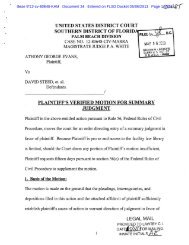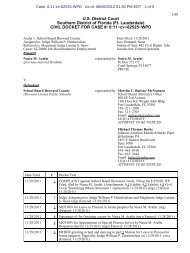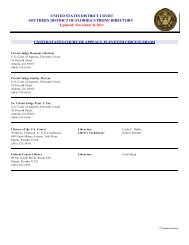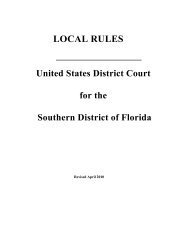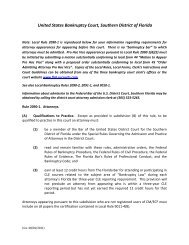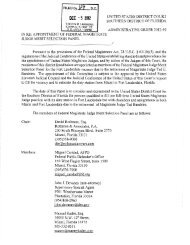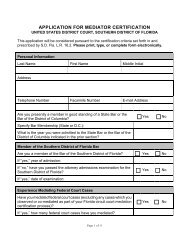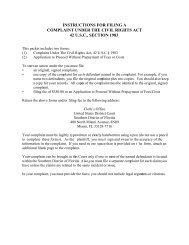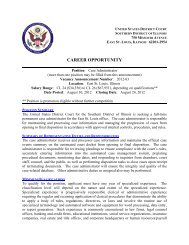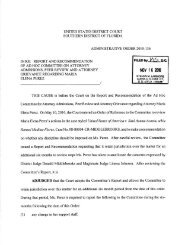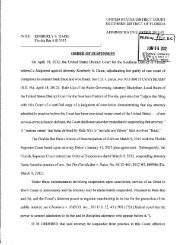JAN j 6 2010 - United States District Court
JAN j 6 2010 - United States District Court
JAN j 6 2010 - United States District Court
You also want an ePaper? Increase the reach of your titles
YUMPU automatically turns print PDFs into web optimized ePapers that Google loves.
equired by Local Admiralty Rule B(5)(c)5(e)(3).<br />
In the event that a party questions its obligations to advance monies required<br />
by this rule, the Marshal may apply to the <strong>Court</strong> for instructions concerning<br />
that party's obligation under the rule.<br />
46Mf) Property in Possession of a <strong>United</strong> <strong>States</strong> Officer. Whenever the<br />
property to be arrested or attached is in custody of a <strong>United</strong> <strong>States</strong> officer,<br />
the Marshal shall serve the appropriate process upon the officer or employee;<br />
or, if the officer or employee is not found within the <strong>District</strong>, then to the<br />
custodian of the property within the <strong>District</strong>.<br />
The Marshal shall direct the officer, employee or custodian not to relinquish<br />
custody of the property until ordered to do so by the <strong>Court</strong>.<br />
474-(g) Process Held in Abeyance.<br />
4arHl) When Permitted. In accordance with Supplemental Rule E(3)(b), a<br />
plaintiff may ask the Clerk of the <strong>Court</strong> not to issue process, but rather to<br />
hold the process in abeyance. The Clerk of the <strong>Court</strong> shall docket this<br />
request, and thereafter shall not be responsible for ensuring that process is<br />
issued at a later date.<br />
When Intervention Is Subsequently Required. It is the intention of<br />
these rules that a vessel or other property should be arrested or attached<br />
pursuant to process issued and effected in only one civil action. Therefore,<br />
if while process is held in abeyance on one action, the vessel or property is<br />
arrested or attached in another action, it shall be the responsibility of the<br />
plaintiff who originally requested process be held in abeyance in the first<br />
action to voluntarily dismiss without prejudice the first action, insofar as<br />
that action seeks to proceed against the property arrested or attached in the<br />
second action, and promptly intervene in the second action pursuant to Local<br />
Admiralty Rule E(2) (a) 5 (b) (1) or -f&f (2) .<br />
In order to prevent undue hardship or manifest injustice, motions to<br />
consolidate in rem actions against the same vessel or property will be granted<br />
only in exceptional circumstances.<br />
4&4-(h) Release of Property in Accordance With Supplemental Rule E(5).<br />
Release by Consent or Stipulation. Subject to the limitations imposed<br />
by Supplemental Rule E(5)(c), the Marshal may release any vessel, cargo or<br />
property in the Marshal's possession to the party on whose behalf the property<br />
is detained. However, as a precondition to release, the Marshal shall require<br />
a stipulation, bond, or other security, expressly authorizing the release. The<br />
authorizing instrument shall be signed by the party, or the party's attorney,<br />
on whose behalf the property is detained.<br />
The stipulation, bond, or other security shall be posted in an amount equal to,<br />
or greater than, the amount required for the following types of action:<br />
43rHA) Actions Entirely for a Sum Certain. The amount alleged to be due in the<br />
complaint, with interest at six percent per annum from the date claimed to be<br />
due to a date twenty-four months after the date the claim was filed, or by<br />
123



